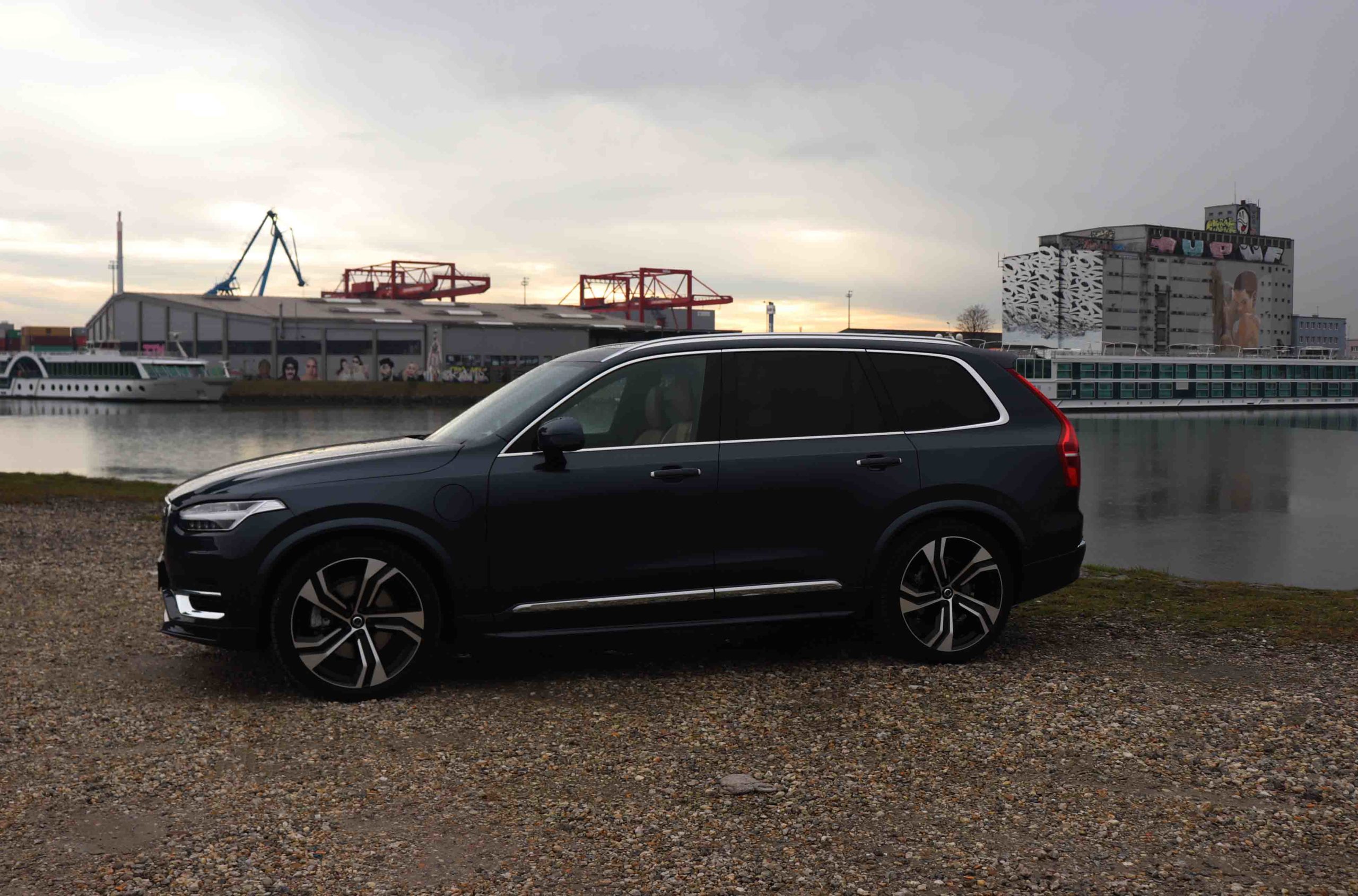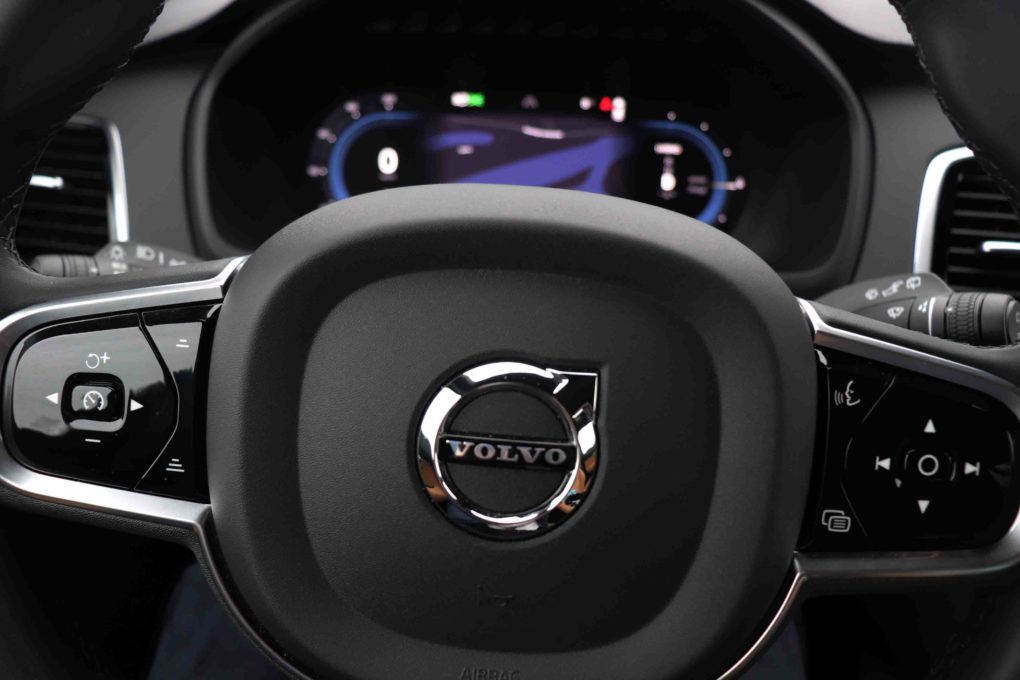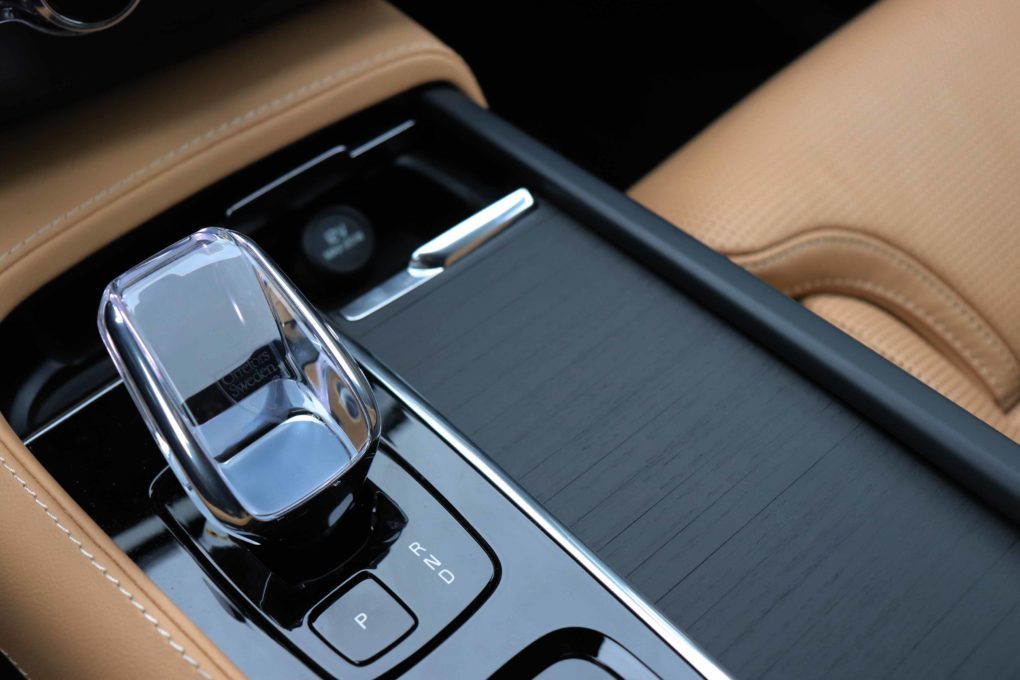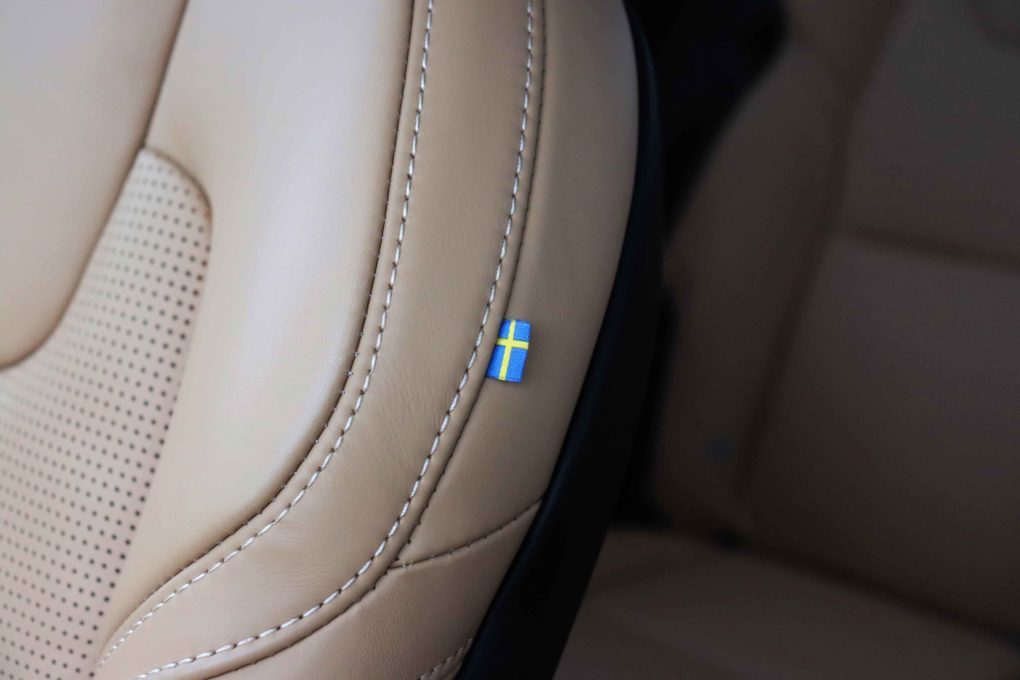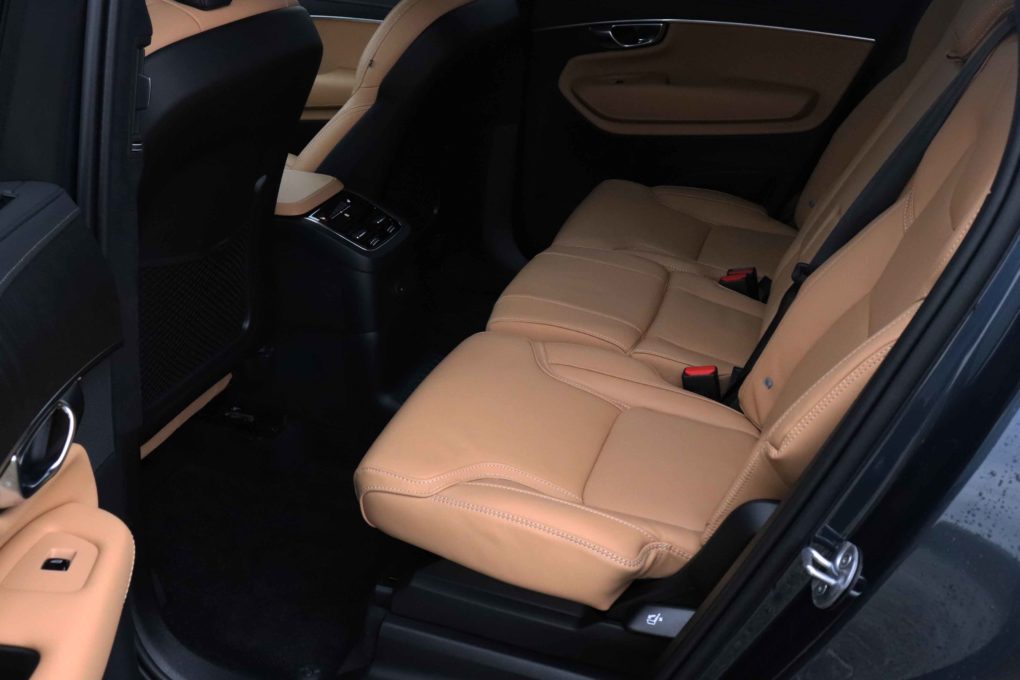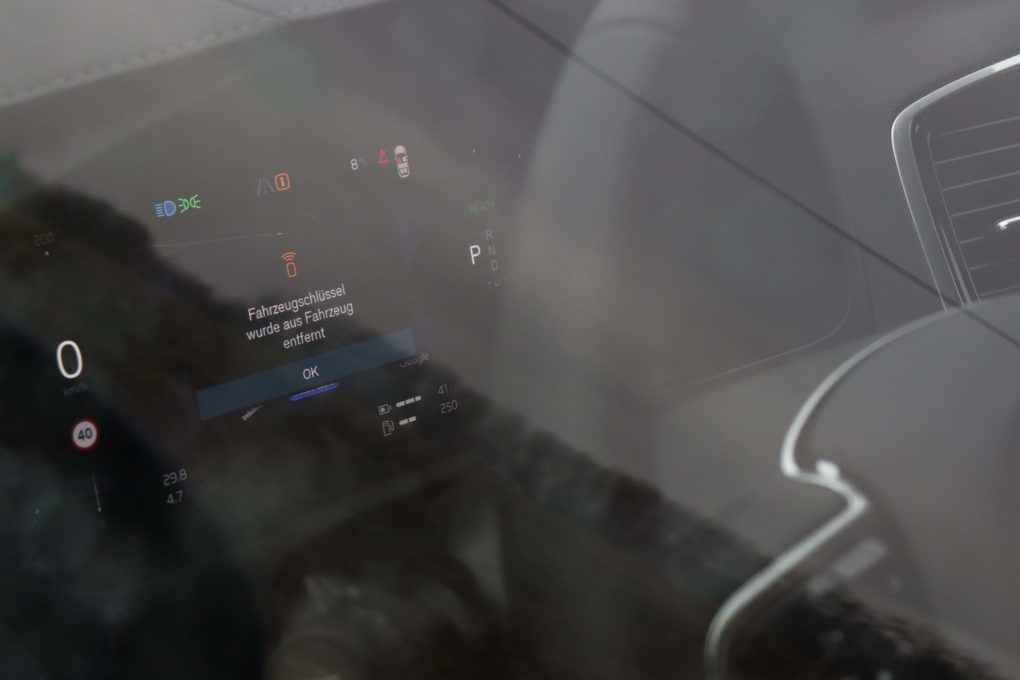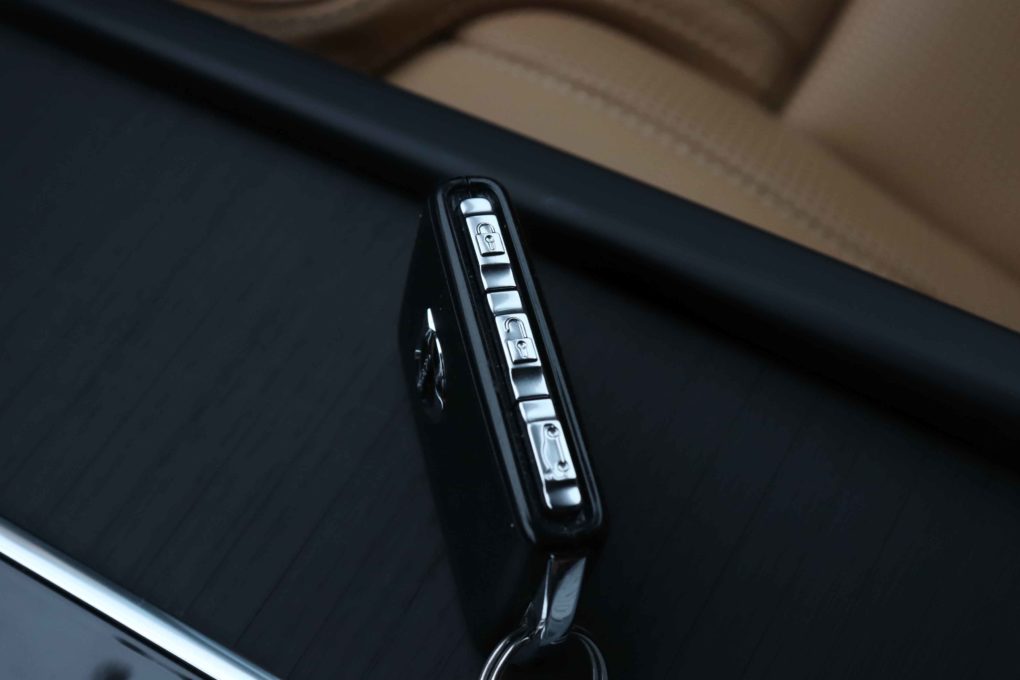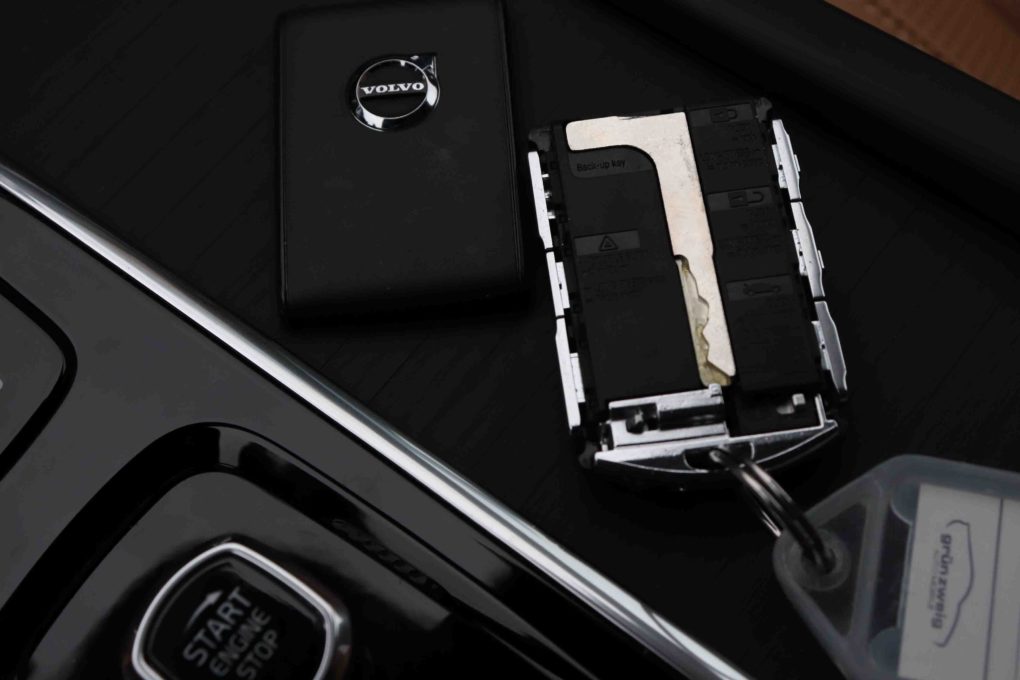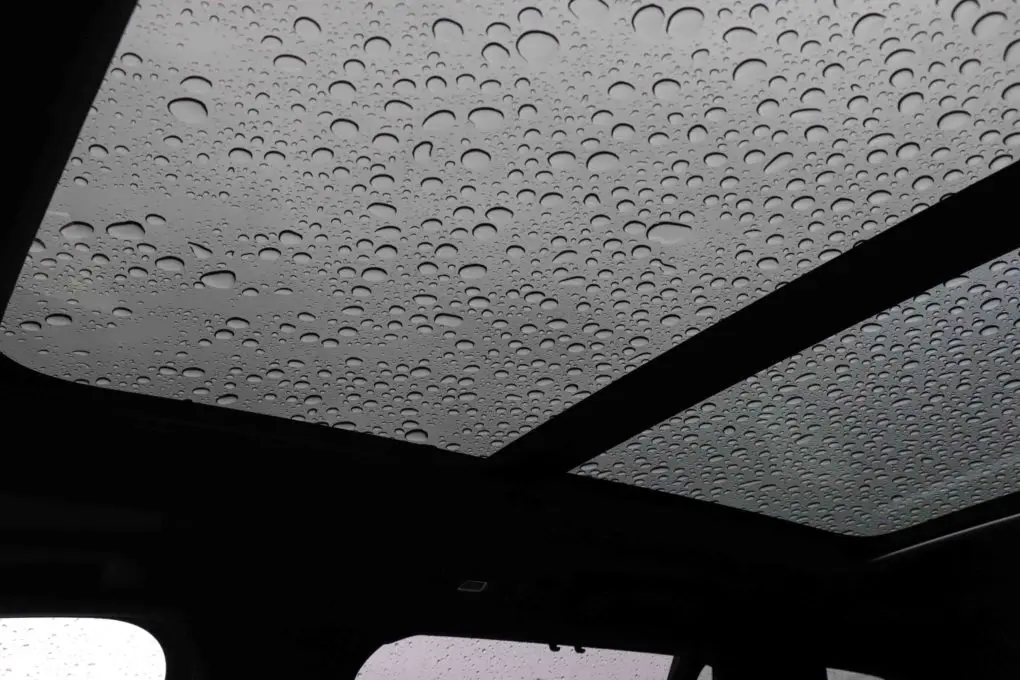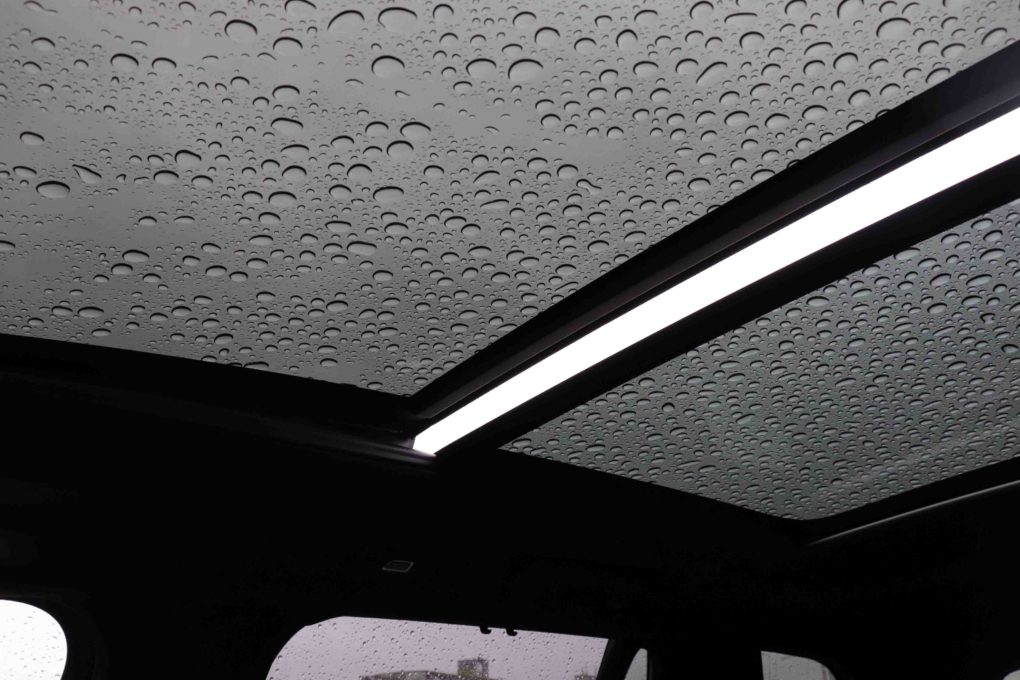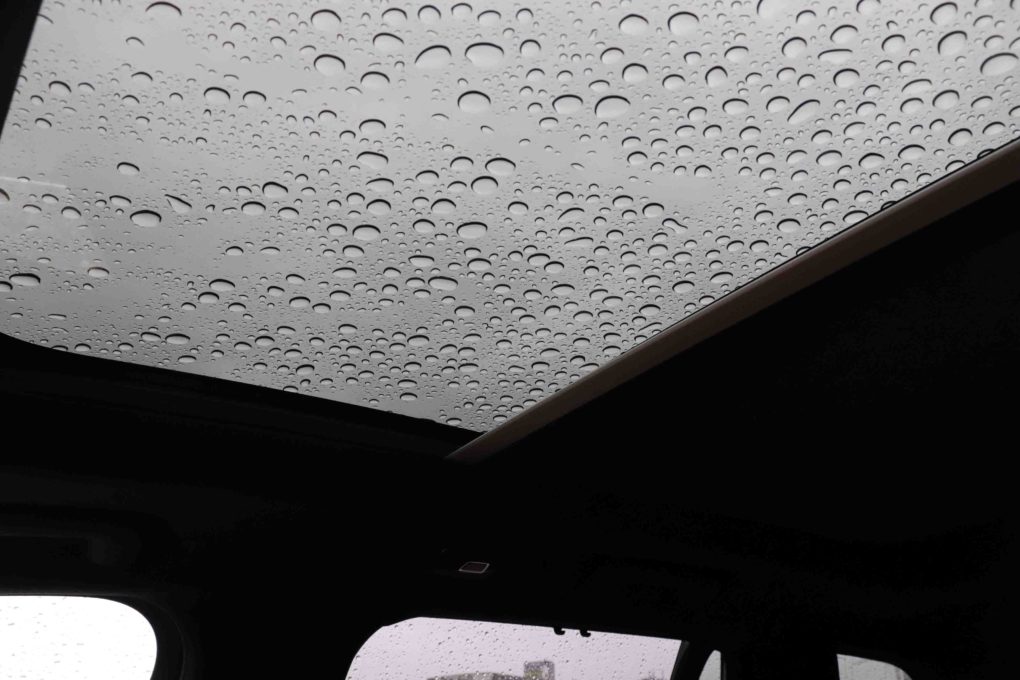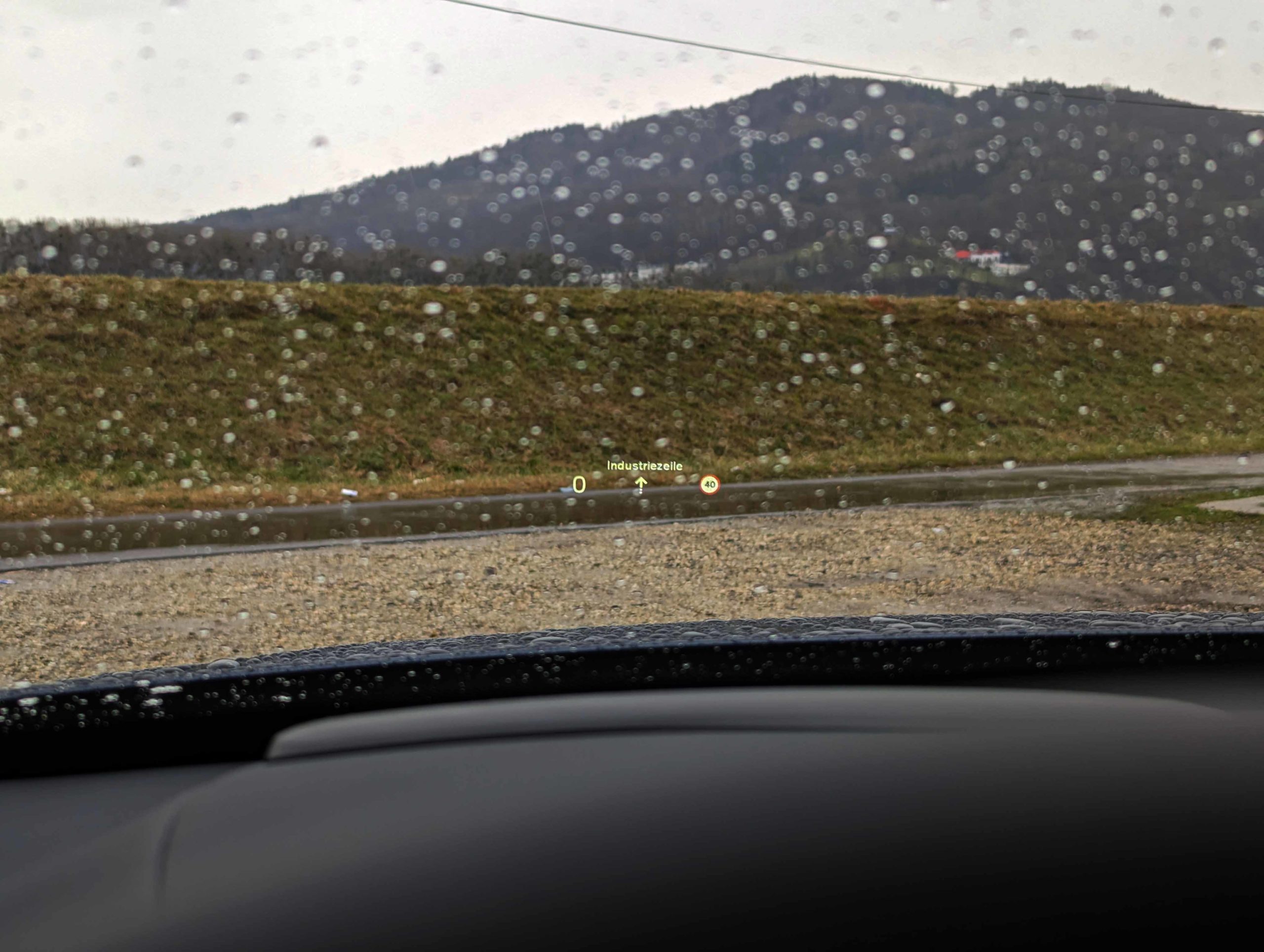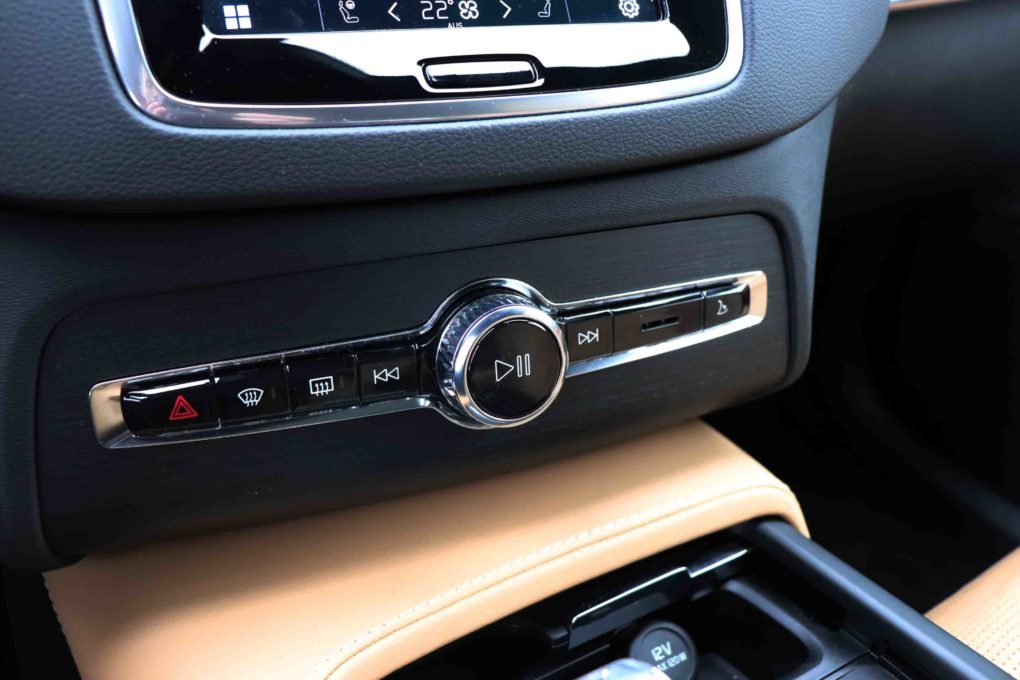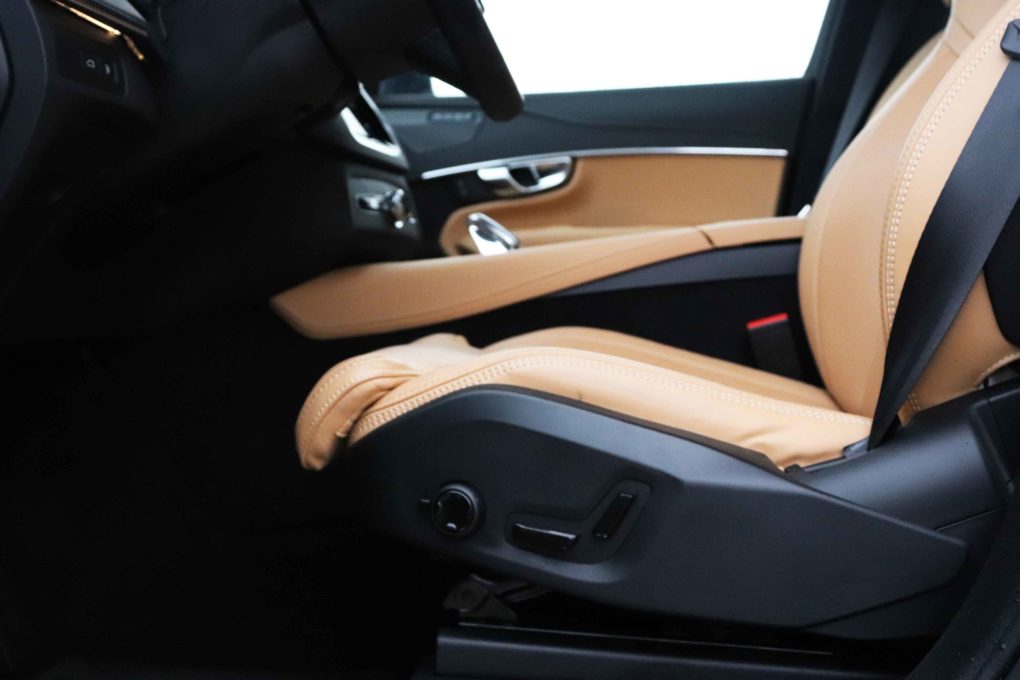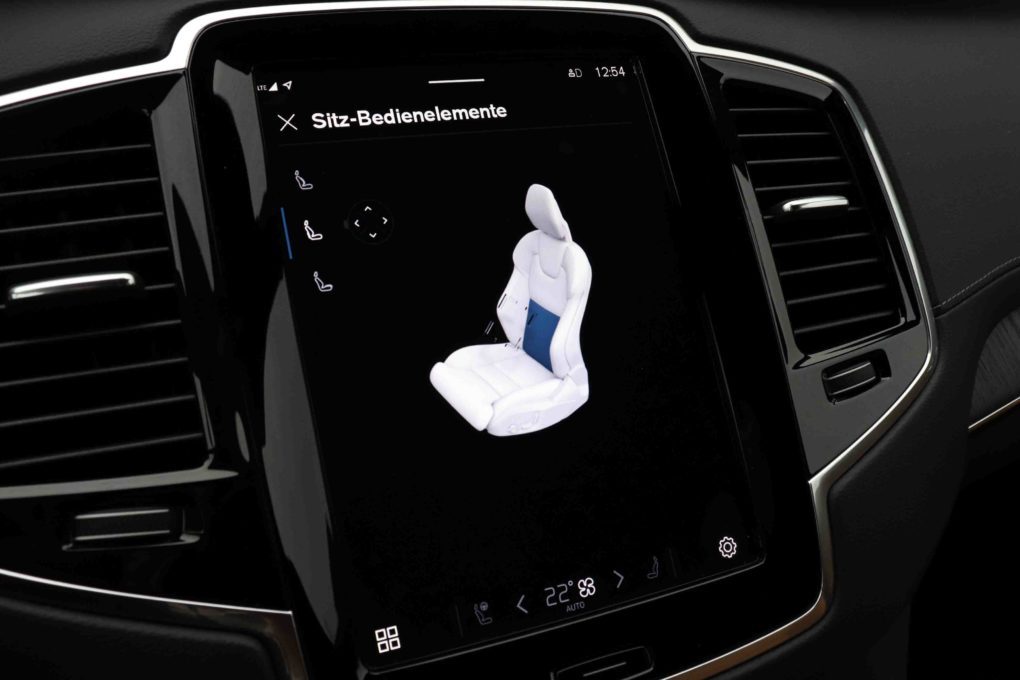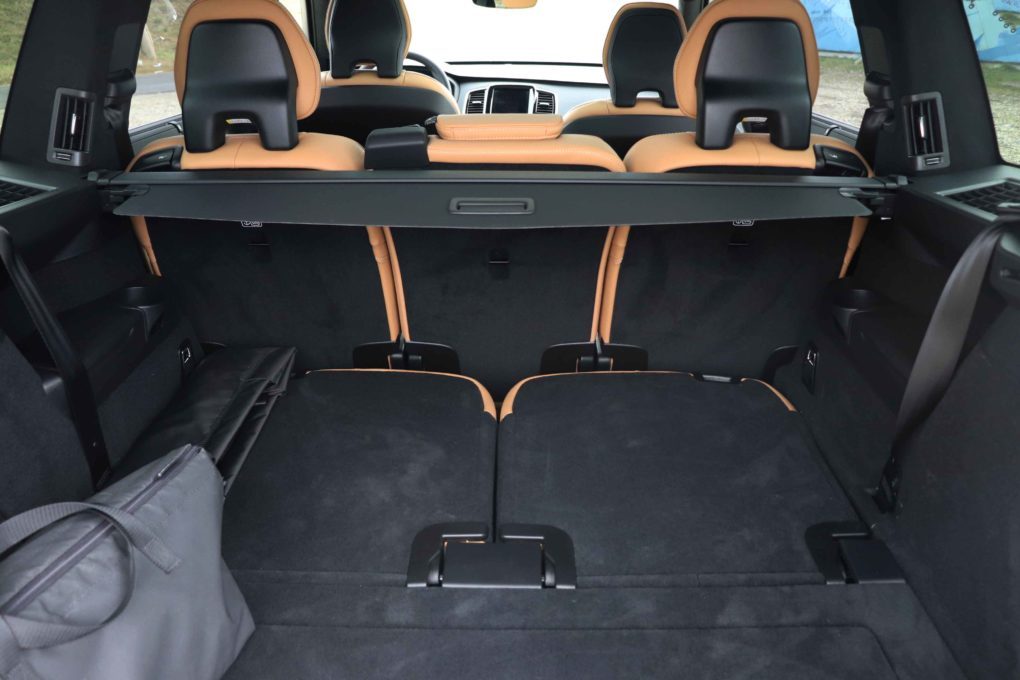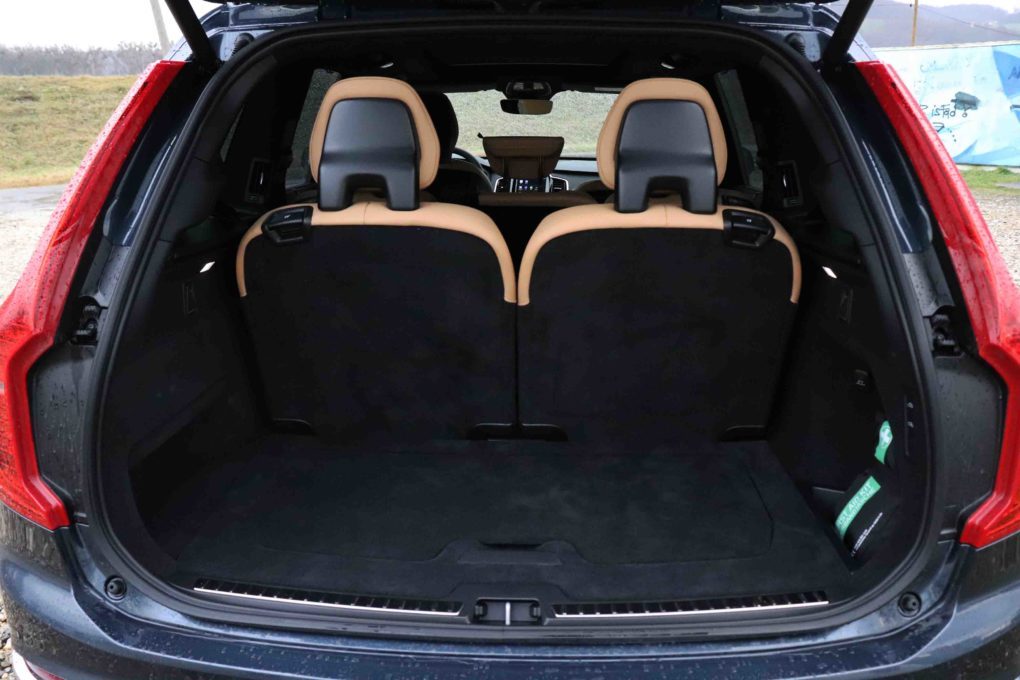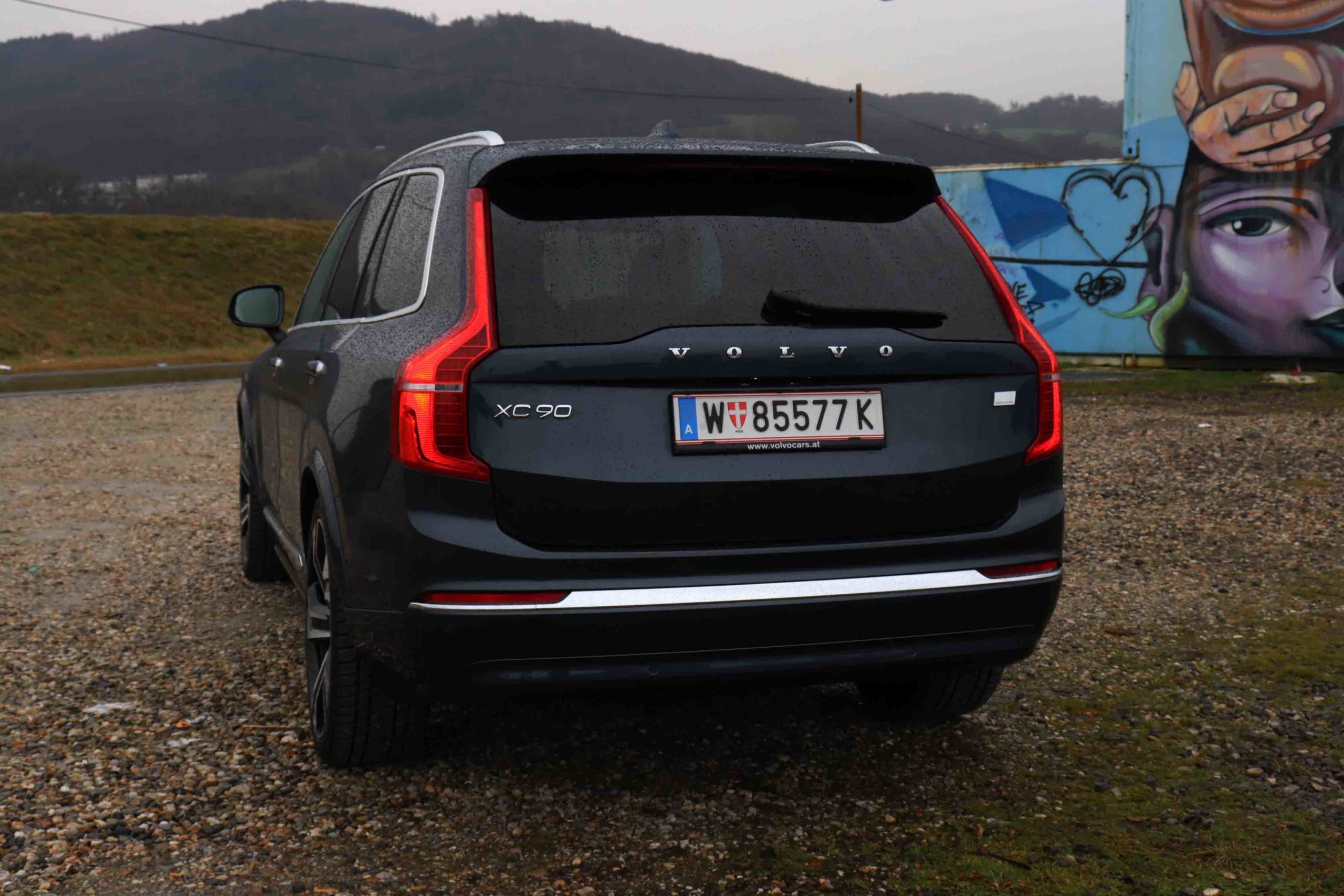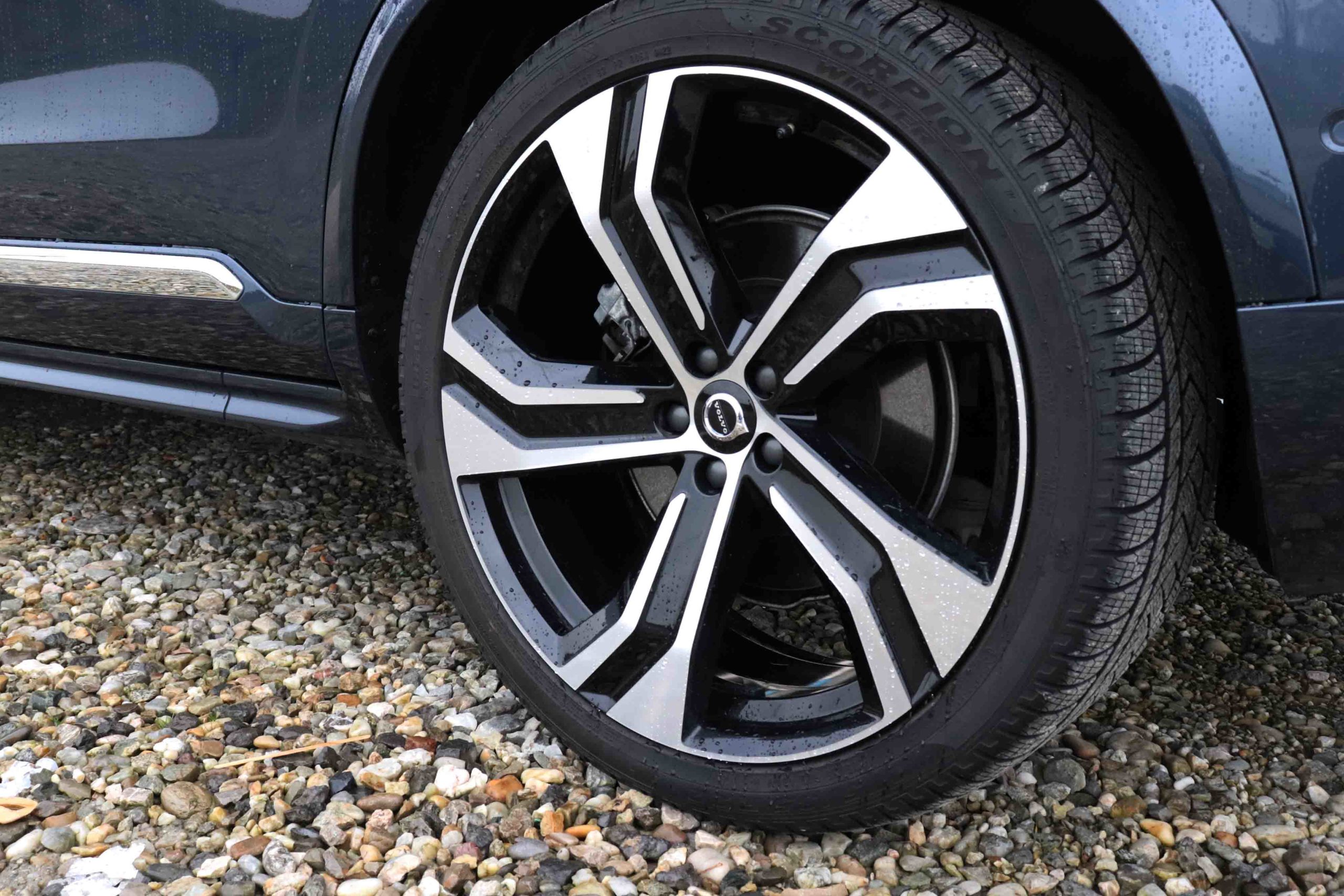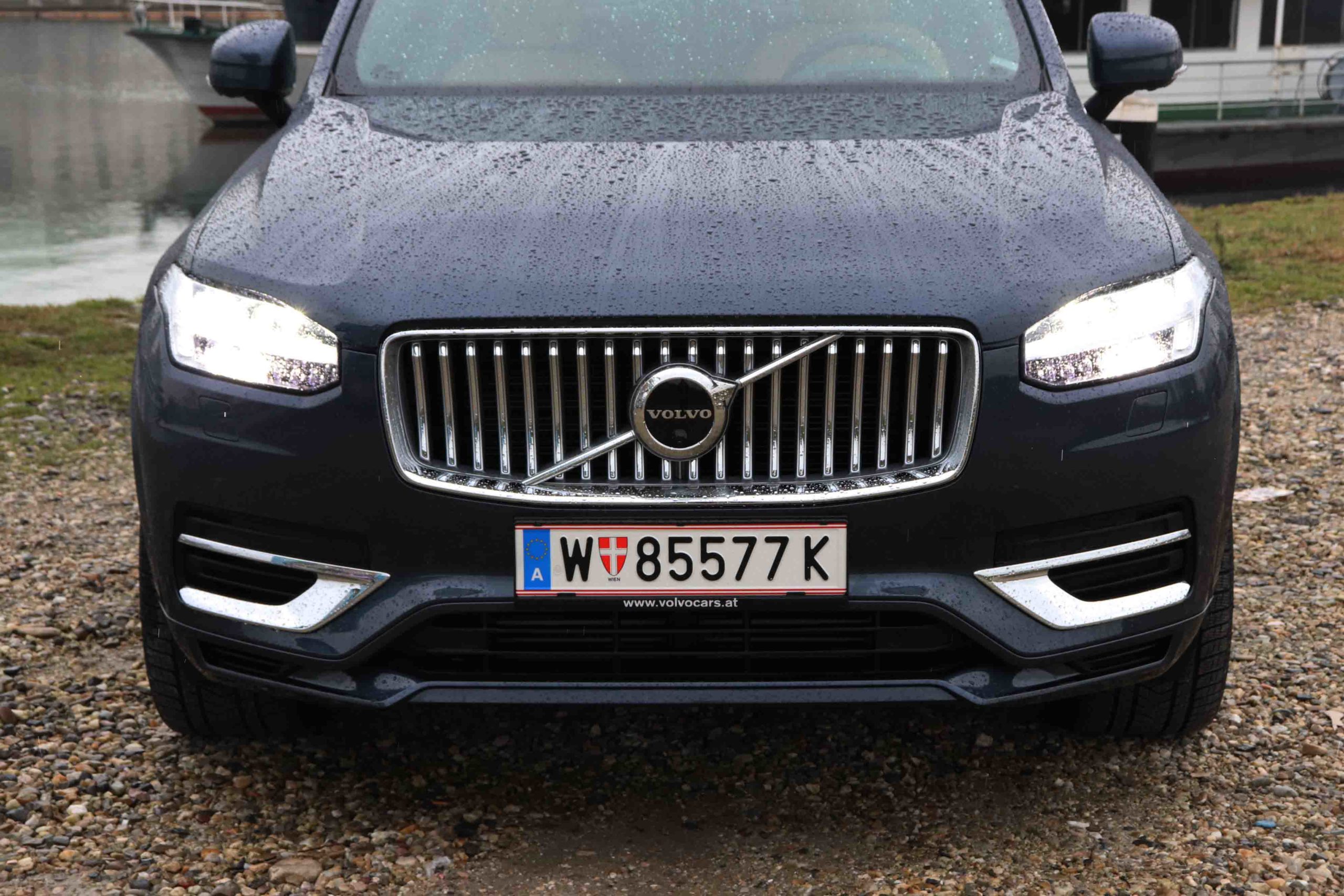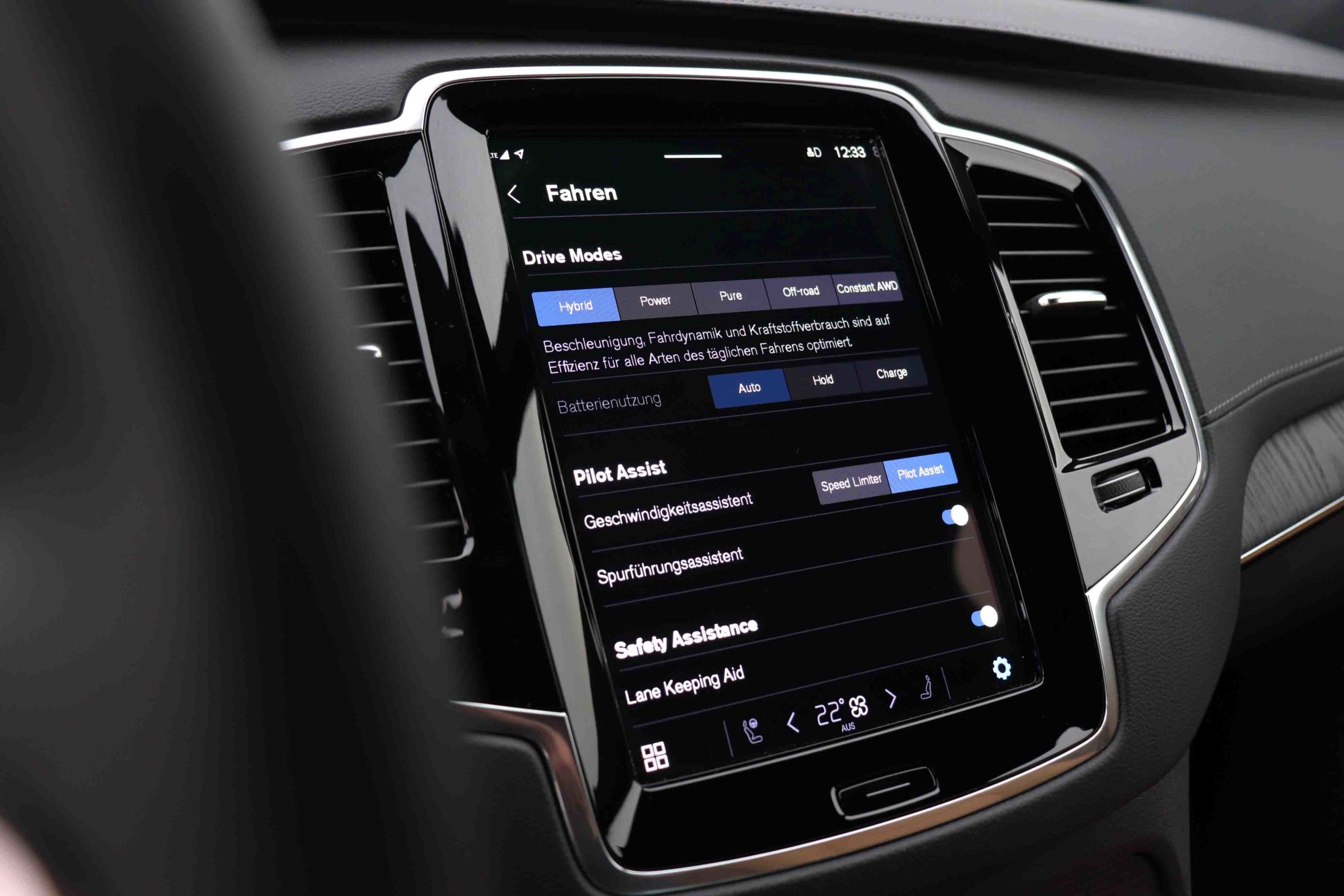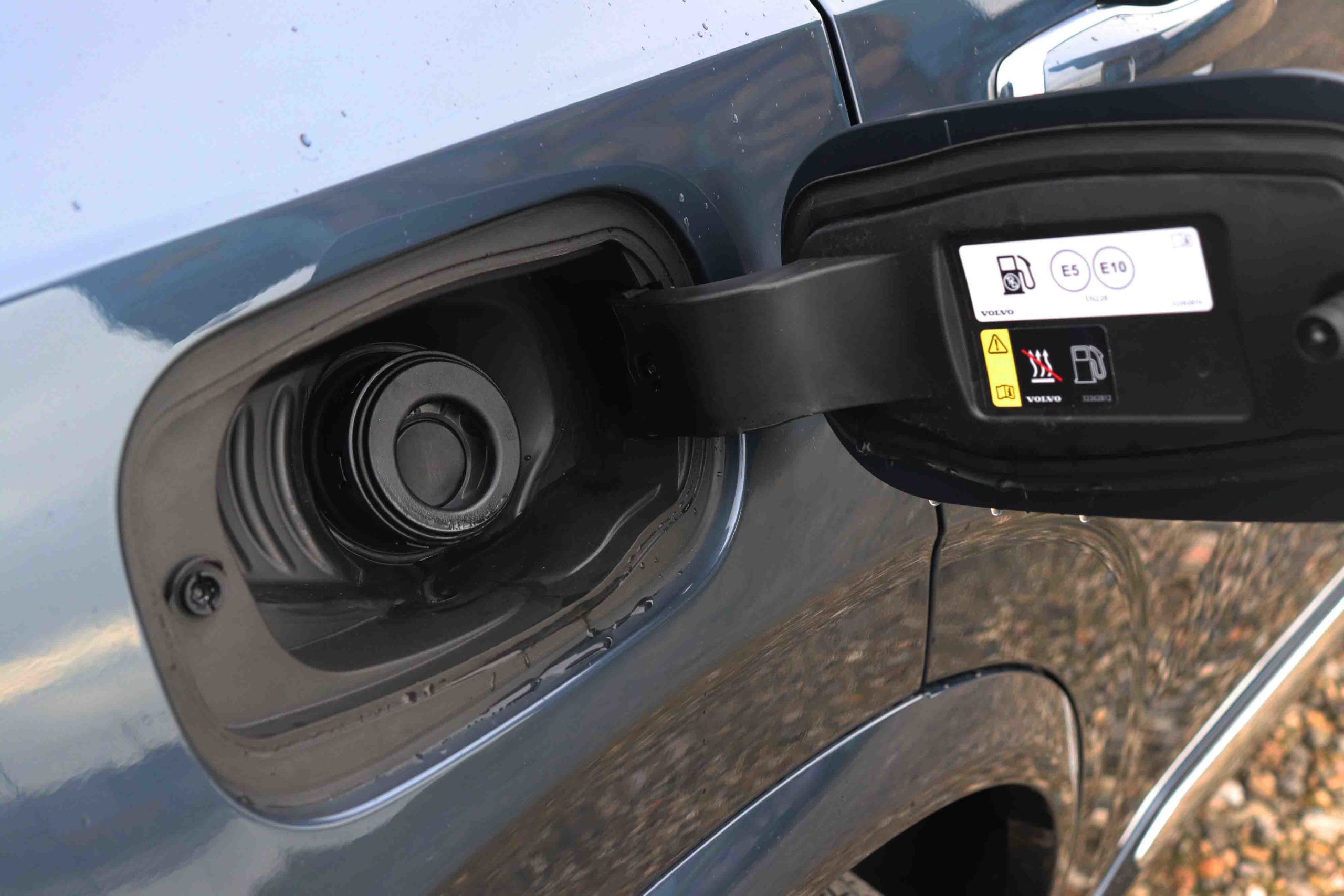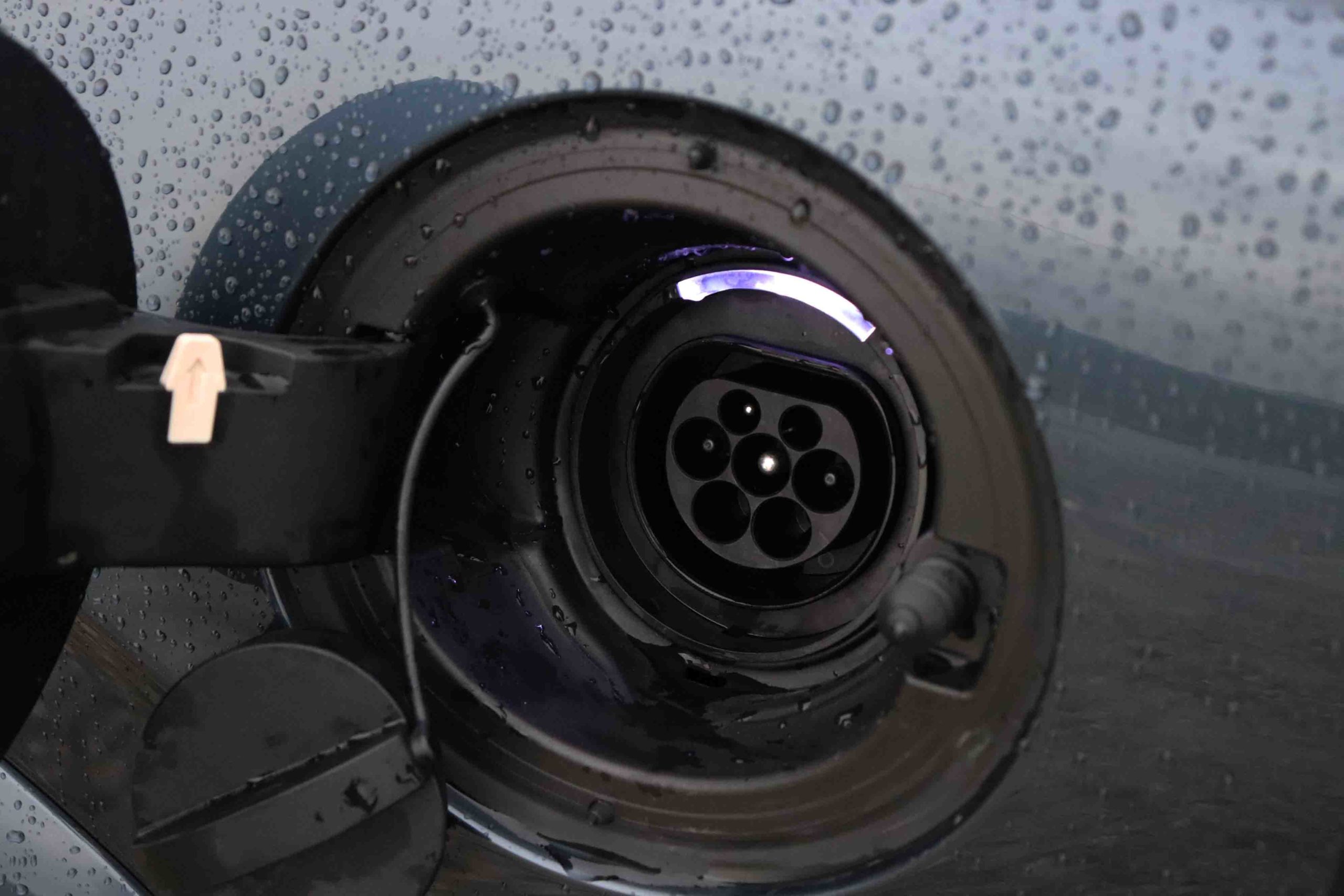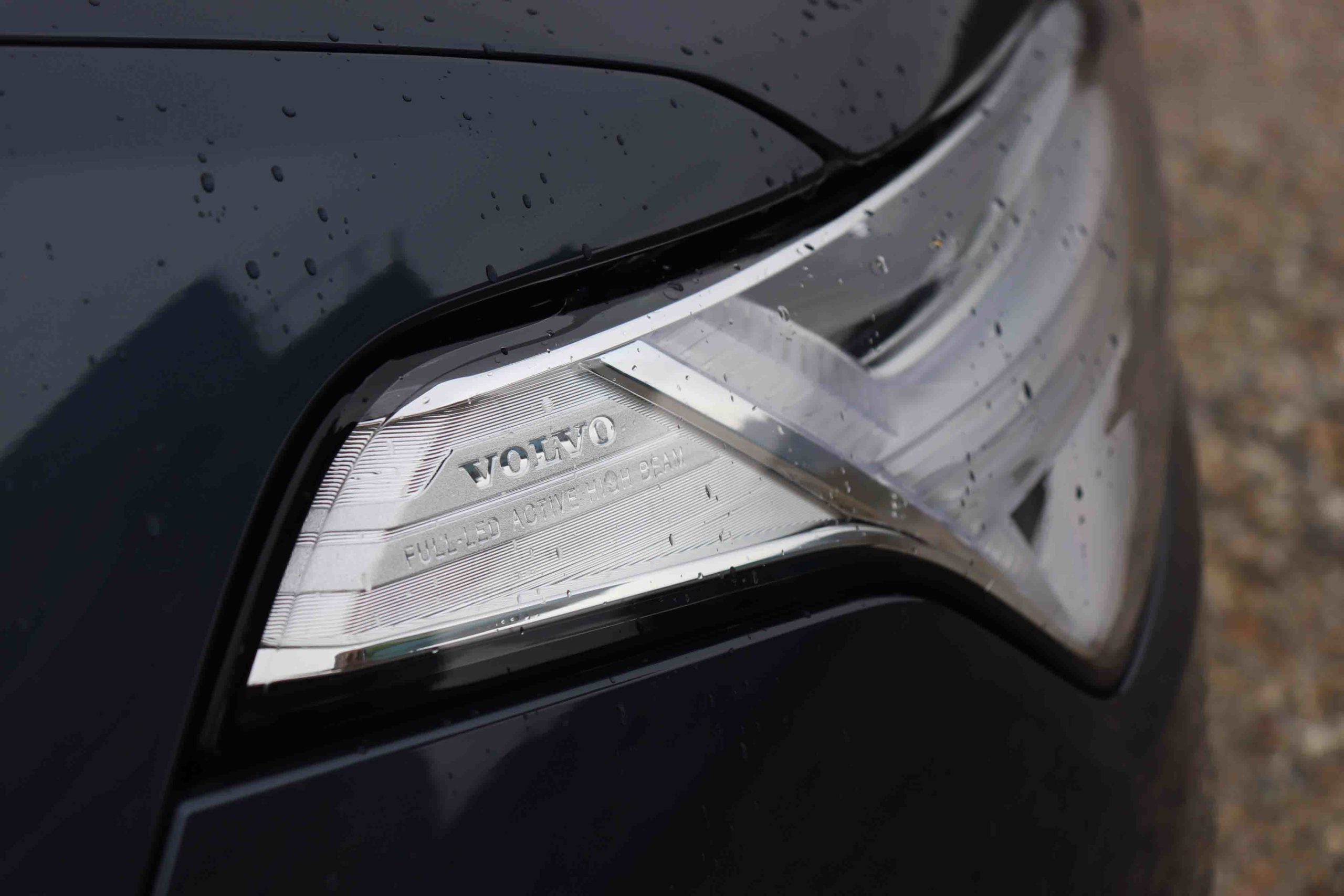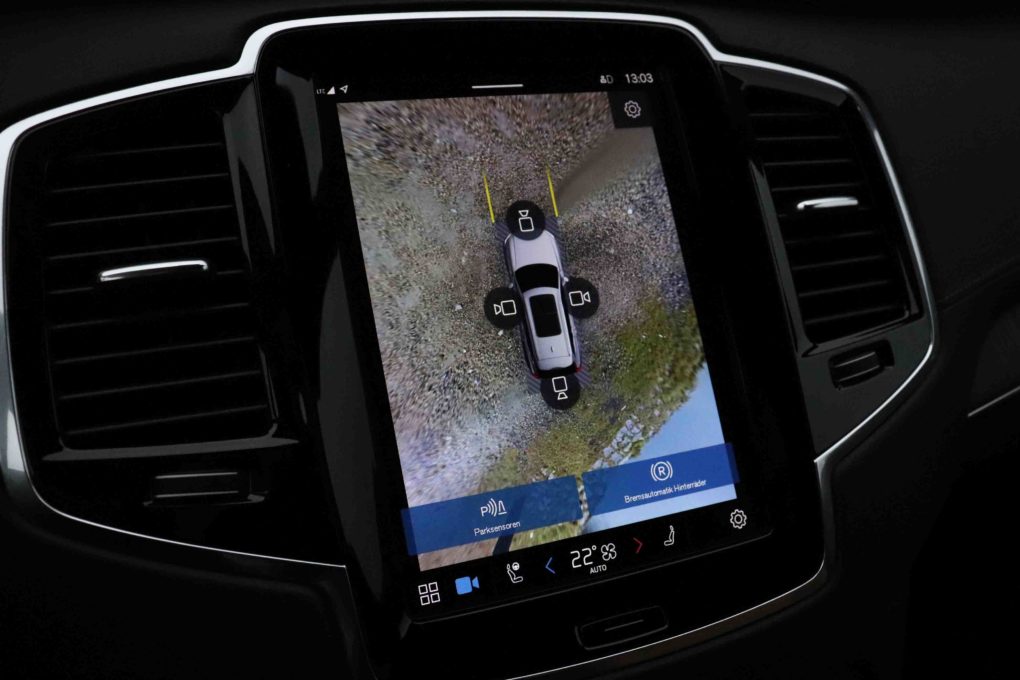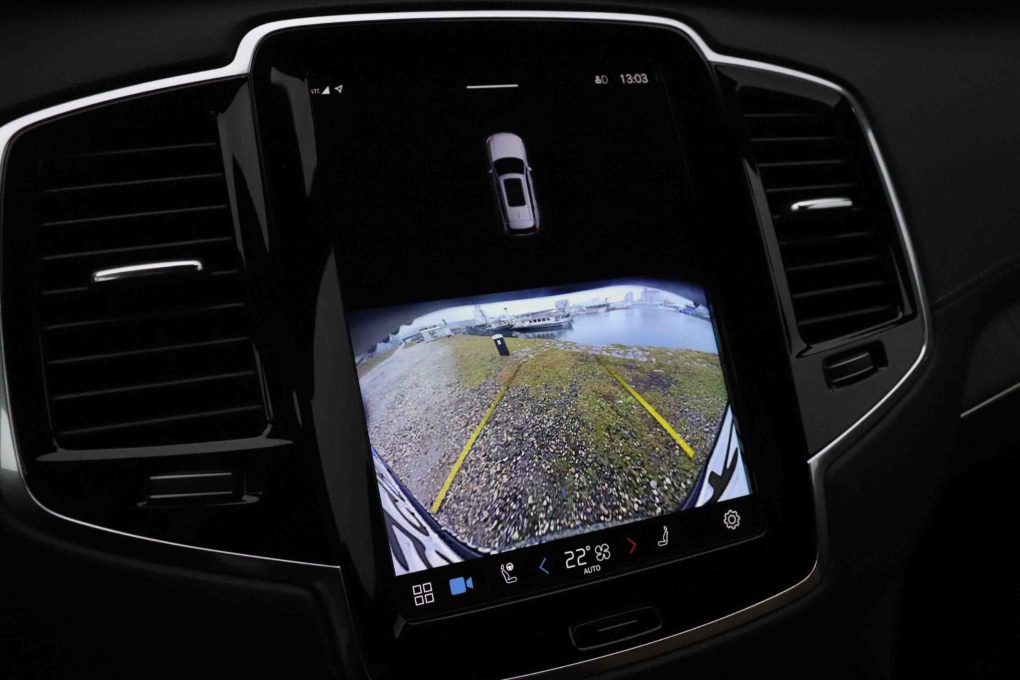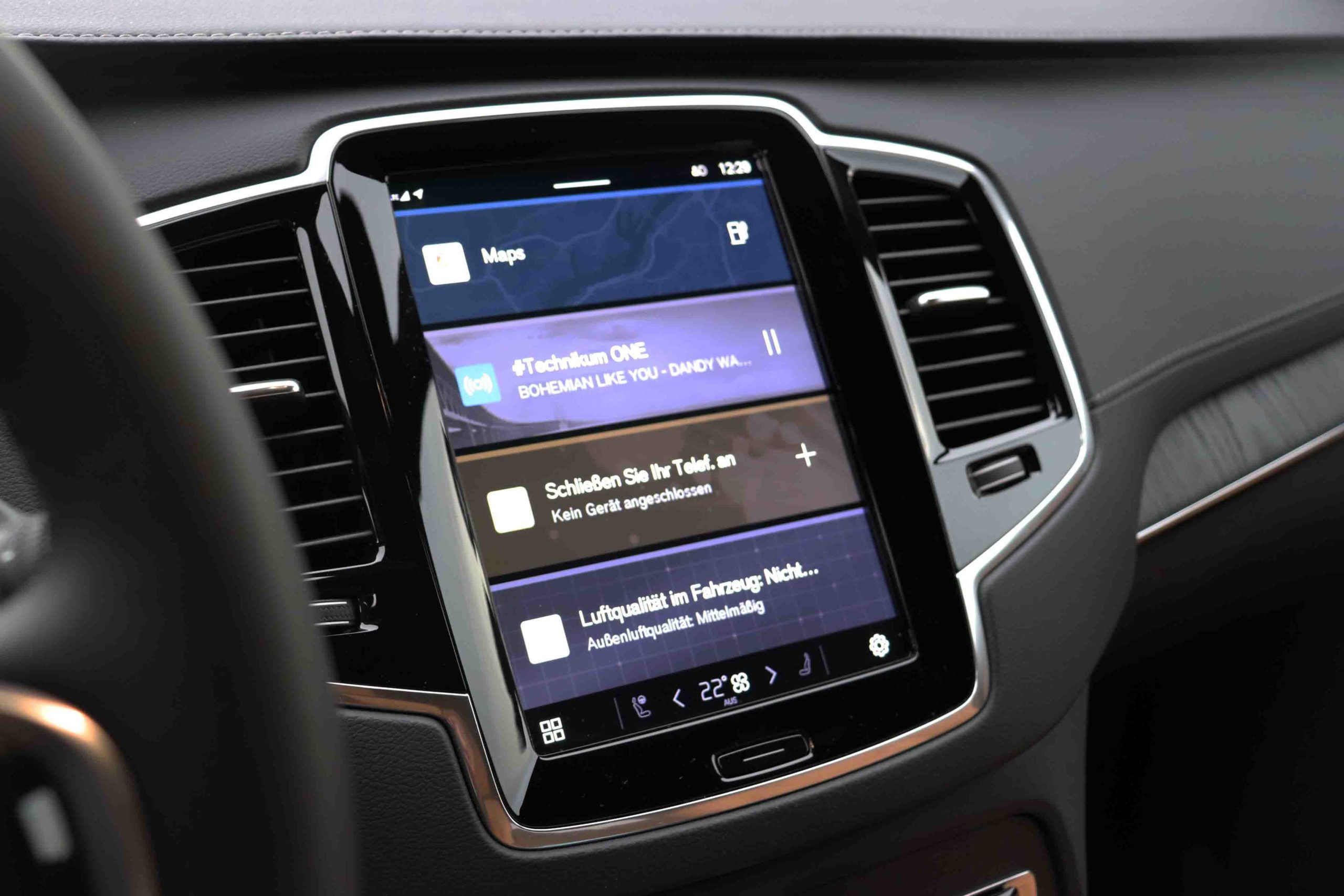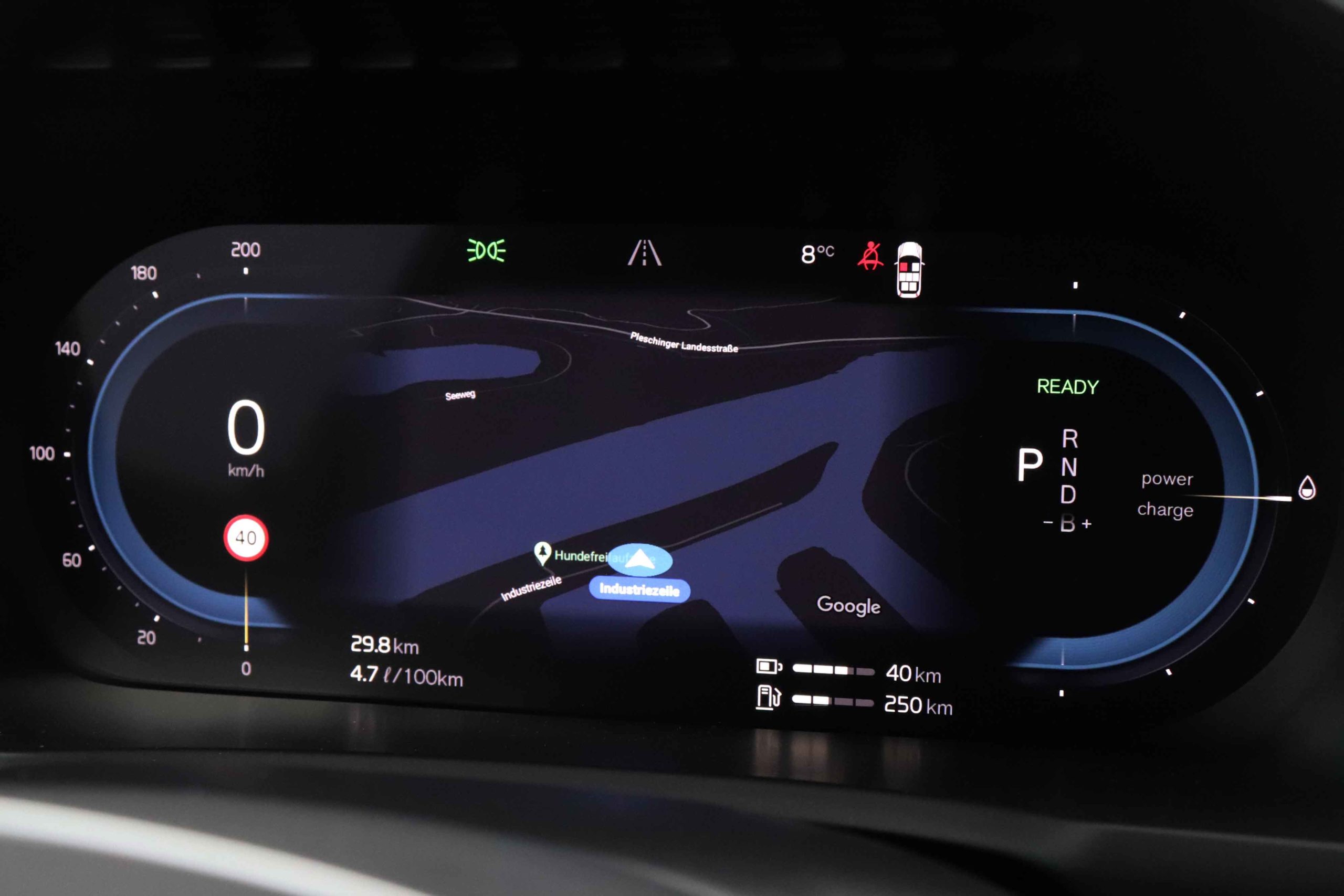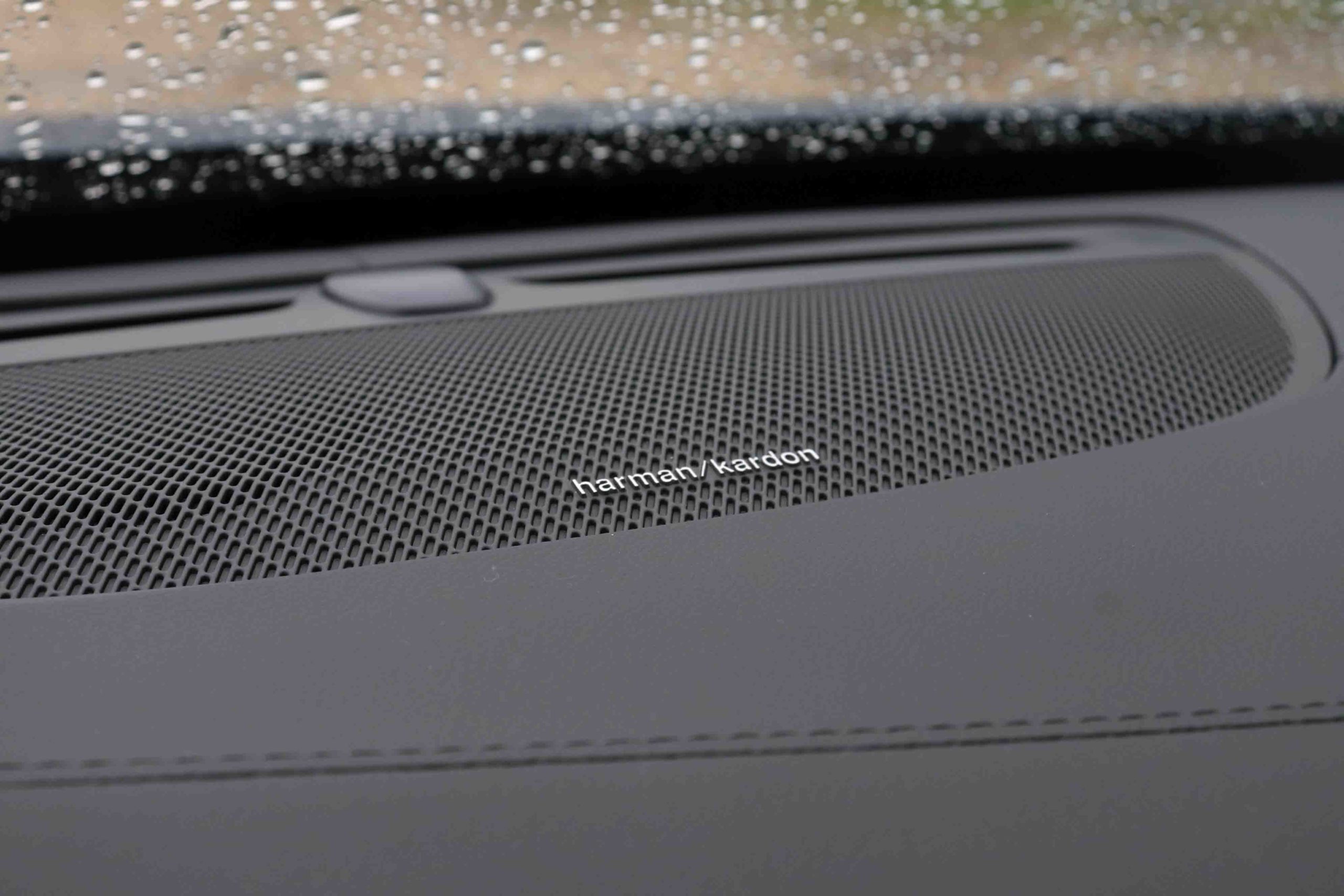Volvo XC90 Recharge T8 on test: Swedish premium SUV
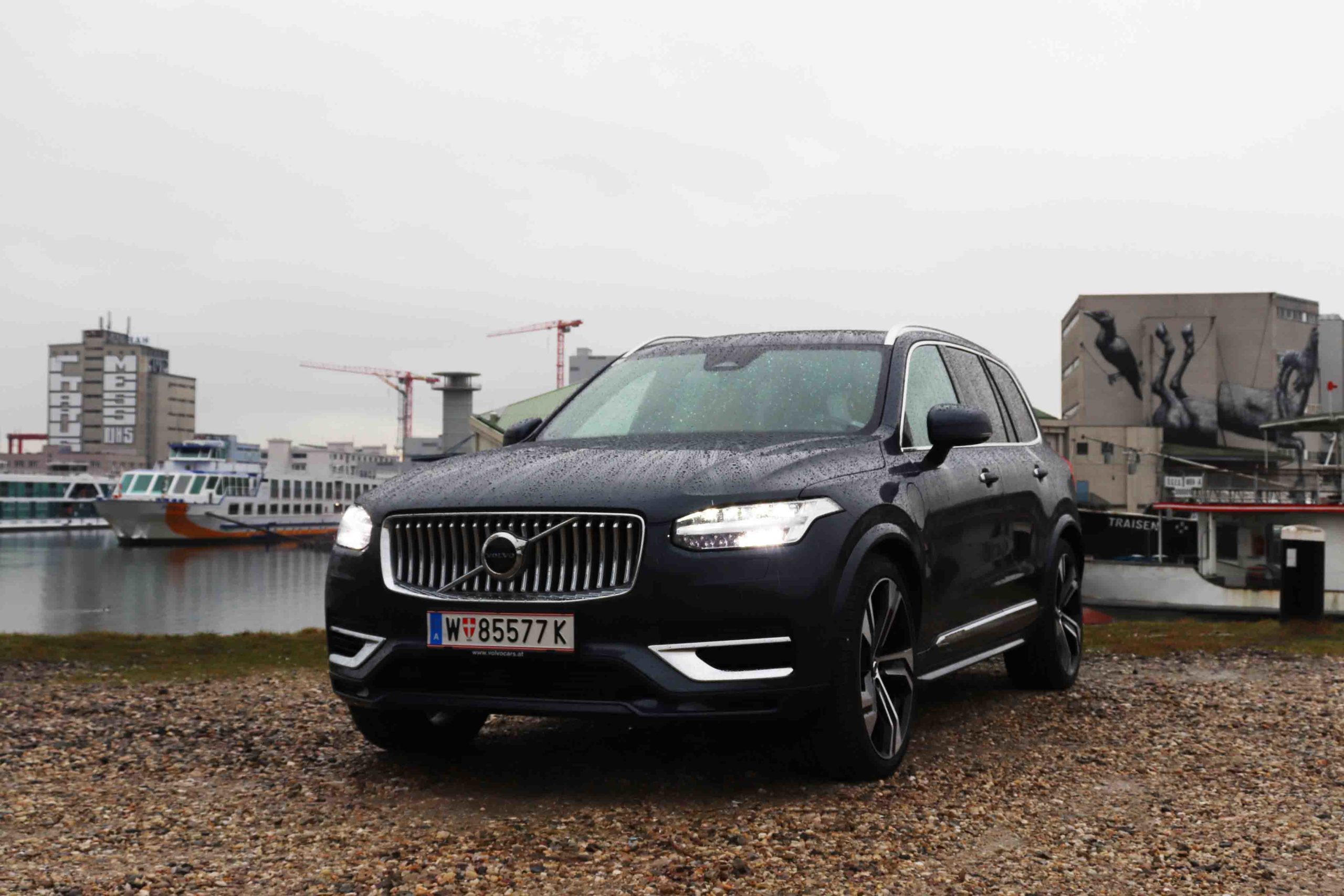
With the Volvo XC90, the Swedes are bringing a handsome SUV onto the market, the manufacturer's absolute top model. A vehicle with a premium feeling through and through – but not everything that glitters is perfect. In this TechnikNews test there is everything there is to know about the hybrid.
tl;dr: The Volvo XC90 is definitely a premium car, that's for sure. The processing is excellent, the interior as well as the exterior is well thought out. The driving experience can best be described as gliding over the road, even if the big one is extremely thirsty. An average consumption of 9 to 15 liters of petrol per 100 km with an empty battery is not exactly low.
The software with Android Automotive works reliably, even if I have a few question marks in terms of operation and design. The acceleration also leaves me somewhat disappointed, which does not do justice to the 455 hp. After so much power, it just doesn't feel like it. You can read more about this in the section “Driving impressions” below.
Volvo doesn't do much wrong with the XC90, but gets negative points in some areas that should have been avoided. A new, valuable vehicle key is also urgently needed. Good news: With the upcoming companion EX90, the manufacturer seems to make up for almost all of the negative points here and lets go of the Prohope for a great, all-electric vehicle at the product presentation. We stay tuned.
But all in all Volvo delivers a premium package here, apart from the weaknesses. If you stick to the driving experience and the processing, the buyer will definitely get his money's worth here.
Test vehicle details: Volvo XC90 T8 AWD Plug-in Hybrid Ultimate, Bright Denim Blue. Extras: 22″-5 double-spoke rims in sports design, adaptive air suspension, acoustic glazing for the side windows, parking camera with 360-degree view, darkened side and rear windows, head-up display. RRP: 102.774,00 euros (prices for Austria; incl. 20% VAT, 0% NoVa).
Thanks to Volvo Cars Austria for providing the test vehicle and the Autohaus Grunzweig Automobile for easy processing.
Jump to section
Interior: At the highest level
- Picture: TechnikNews
- Picture: TechnikNews
- Picture: TechnikNews
- Picture: TechnikNews
- Picture: TechnikNews
It is well known that tastes differ, but I think the interior of the Volvo XC90 is a great success. Nothing creaks, squeaks or slips – everything is in its place and looks high quality. From the dashboard to the center console to the seats, a wow feeling. The seats in our test car were made of nappa leather/imitation leather in the color Amber Brown, seat heating and ventilation are of course included. The gear lever is adorned with a Swedish crystal glass from Orrefors, the steering wheel is as usual and comes with a steering wheel heating. Volvo describes this combination as comfort equipment that lives up to its name.
There is an exception with the vehicle key, which is found in toy cars - sorry! - sometimes feels more valuable. This plastic tag really doesn't do justice to a vehicle at this price point.
- Picture: TechnikNews
- Picture: TechnikNews
Panoramic sunroof
The panoramic sunroof creates a great atmosphere, provided you opt for the Core variant of the Volvo XC90. If necessary, this can be completely covered at any time (see picture on the far right; half closed) or opened up a little (see picture in the middle). But don't expect a convertible roof.
- Picture: TechnikNews
- Picture: TechnikNews
- Picture: TechnikNews
Head-Up Display
There is also a head-up display for the driver, which shows the four most important driving data (current speed, current traffic signs, cruise control status and the next action of the navigation system). This gives even more concentration and a better view of the road, a look down at the other speedometer is so rare. Even in direct sunlight it was proSurprisingly, the projected ad is still visible.
button operation
A good comproMissing for me was the arrangement of the buttons under the infotainment system. Of course, tastes differ here too – but I'm still a fan of buttons and keys instead of display operation. Volvo has still placed the most important elements to be controlled physically on buttons here, although I would have liked to see one for temperature control instead of the button for opening the glove compartment. Things like seat adjustment are still controlled on the bottom left or right, next to the seat. Nice extra: the currently selected action is shown on the display while you are adjusting, so you don't have to guess what's happening.
- Picture: TechnikNews
- Picture: TechnikNews
- Picture: TechnikNews
Seven seats, huge trunk
Without question, the XC90 is a great family car that offers plenty of space for holiday luggage. Seven seats total, a huge trunk at five seats with 1.816 liters of storage space. Appropriate for the season: Do you have to fold down a seat for a five-person ski holiday in winter? Not here - most skis were able to in our test proeasily be stowed diagonally in the trunk.
- Big trunk, room for five... (Picture: TechnikNews)
- ... small trunk, space for seven. (Picture: TechnikNews)
There is another, smaller storage compartment under the trunk. In this, for example, the charging cable or other, narrow luggage can be stowed away. Nice gimmick, but almost unnoticeable if you opt for the Volvo XC90 with air suspension: With a button on the right side, the rear of the car can be lowered or raised. In practice, however, this does not bring much added value.
Exterior: In the Volvo look
The "Thor's Hammer" LED headlights on the front, the typical Volvo taillights on the back - the two unique selling points in the design language of the Swedes. The front makes the Volvo look bold and sporty, but I find the arrangement of the rear lights outdated.
Volvo has been using them for years, unfortunately they no longer meet my personal taste. With the upcoming Volvo EX90, the manufacturer will also revise this and has apparently changed the rear design of the Polestar 2 get inspired.
The 22″-5 double-spoke rims, which are kept in a sports design, make a really noble impression. The other, external elements, whether door entry or trunk - nothing creaks or looks inappropriate. Volvo delivers a top overall package here, but at this price it has to be. The design of the radiator grille at the front is of course also a matter of taste, but I really like it.
Dimensions
The XC90 not only looks bulky, it is. With dimensions of 4,953 meters in length, a height of 1,767 meters and a width (including folded mirrors) of 2,140 meters (2,008 meters with folded mirrors; 1,958 without mirrors), it is not yet one of the largest, but it is at the top of the size table with you.
Of course, this means a lot of space in the interior, generous legroom in the rear seat rows. On the other hand, it often gets tight in the city: Narrow, left-hand lanes at construction sites can no longer be driven in with the XC90, and parking is sometimes a challenge. The Swede is not a compact city car, but those interested in the SUV should know that anyway.
Driving impression: Hovering over the asphalt
These four words best describe the driving experience. You glide extremely quietly and calmly over the streets. With the help of the adaptive air suspension, which was included as an extra in our model, the driving experience feels even more buttery. Even if minor bumps in the road were sometimes noticeable - after all, a lot of weight is pressing on the tires. But there are worlds between the driving experience with deactivated air suspension and active air suspension, absolutely incomparable. Provided the tires fit too.
acceleration
According to the paper, the Swede is equipped with a total of 455 horsepower or 335 KW. The R310-cylinder petrol engine delivers 228 HP (4 KW), the electric motor contributes 145 HP (107 KW). Sounds like a sports car, but it isn't: Anyone who knows Volvo knows that the Swedes always mention safety of the car in all points. The top speed is therefore 180 km/h (hybrid) and 125 km/h (purely electric) before it is limited.
However, the XC90 doesn't look like it has 455 hp. After depressing the gas pedal, one could always feel a commemorative second until the SUV shifted down and then put the power to the tires. I know that better from other manufacturers - the automatic gearshift feels a bit sluggish here.
It was always faster to start from zero than to continue accelerating at an already high speed. In the end, you can count on around 5,5 seconds from 0 to 100 km/h. This value comes from Volvo, which we were able to reproduce review. The dead weight of almost 2,3 tons and the high air resistance are clearly noticeable here.
If you accelerate quickly, you should also keep a firm grip on the Swede's steering: The rear end sags easily and the hybrid doesn't seem secure on the ground during the acceleration process. During the test, the steering assistant "Pilot Assist" was unable to keep the car properly on track when accelerating without help.
Driving modes
The Volvo XC90 has five driving modes on board in every configuration, here there are "Hybrid", "Power", "Pure", "Off-road" and "Constant AWD" to choose from. On top of that, the battery usage can be set in the menu below, here there are the options of "Auto", "Hold" and "Charge".
By default (after each start), the combination of hybrid and battery use "Auto" is active. The Swede uses both the combustion engine and the electric motor when driving. It would have been nice to be able to select the driving mode directly near the shift lever or on the steering wheel.
Consumption
fuel consumption: According to the WLTP, the manufacturer speaks of an average consumption of 1,2 l/100 km. First of all: It is almost impossible to reach this. It's possible, but in the end it's purely electric and without an accelerator pedal. You can only get close to this value if the car is always fully charged and accelerated very gently. Or inner-city: Due to the low speed, occupants mostly roll around the houses purely electrically, consumption is then 0,0l/100 km. The petrol engine then only switches on when you press the accelerator pedal hard. Alternatively, the "Pure" mode can be selected, in which the XC90 drives purely electrically, but then sometimes only swims along at 120 km/h on the motorway.
In our two-week test period with different driving conditions (city, country, highway), different driving styles (comfortable, sporty, only cruise control) and mainly driving in hybrid mode, we achieved an average consumption of 10,1 liters per 100 km.
The electrical consumption should be according to Volvo (according to WLTP) at 21 kWh/100 km. In purely electric mode on the motorway at a speed of 125 km/h and a bit of city driving, we averaged 33 kWh/100 km review. For a pure city trip to around 25 kWh/100 km.
Reach
If consumption, kilometers driven and the volume of the tank are known, it is not far to calculate the actual range. The tank for the petrol engine is 71 liters and the battery capacity is 18,8 kWh. When fully charged, the manufacturer promises an electric range of 68 kilometers (according to WLTP). In the test, we get a purely electric range of around 30 kilometers, plus a range of around 700 kilometers for the petrol engine. The combined range is therefore between 700 and 800 kilometers depending on driving style, in our test at 730 km.
Assistance systems: no more, no less
The Volvo XC90 is equipped with numerous assistance systems as standard. At Volvo, however, these work exactly in their trained purpose. Means that, for example, the steering assistant performs best on the freeway, just like the Swedes do in the Prospecify product description. The cruise control brakes, accelerates - at the set speed. No automatic adoption of the speed of the traffic sign.
No more, no less. On the other hand, every assistant usually works perfectly for the intended purpose and good weather conditions.
Takes (also) the wheel: Pilot Assist
Supports the driver perfectly in sunny weather conditions, no wind and on the motorway with only slight curves. However, if there is a strong lateral wind, you can easily end up in the adjacent lane without manual steering intervention. Even on construction sites, Pilot Assist almost exclusively prefers the white lines and ignores the orange markings. The Pilot Assist often steered in the direction of the white line, I steered back again. Back and forth.
In principle, Pilot Assist seems to prefer driving in the middle of the lane and to orientate itself on the inner line when cornering.
In the rain and somewhat sharper bends - also on the motorway - the steering assistant gets out. In some cases, it is completely deactivated when it rains, and the assistant steers too weakly on sharper bends to keep the vehicle on track. On the other hand, the steering assistant does not work badly on open country roads with few bends.
That shouldn't be the case, but Volvo doesn't promise the best function under "special" conditions. Volvo also talks about the fact that the steering assistant does not use full "force" to keep the vehicle in the curve. So the manufacturer doesn't promise too much, but still has some room for improvement.
Brings light into the dark: "Thor's Hammer" LED headlights
My personal highlight. The – I'll call them floodlights – illuminate everything within a distance of 250 meters. Driving at night is very pleasant with the Volvo XC90. Some know the comfort of an automatic high beam - the SUV is also equipped with this. However, this does not fade up and down, but masks oncoming and preceding vehicles and hides the light cone on them. This ensures a good view of the edges of the road even when there is oncoming traffic.
Furthermore, the automatic system can change the height of the high beam and, for example, only shine on the ground if there is a lot of oncoming traffic. There were no headlight flashers during the test, and the system felt very reliable.
Only on the highway and trucks were there more often Probleme, where the high beam automatic has pottered around sometimes hectically. Even with poor visibility or bad weather conditions, it often did not recognize the vehicles correctly. Then it's all old school: manually switch off the high beam.
Parking made easy: 360-degree reversing camera
Our equipment includes a reversing camera with a 360-degree view, which delivers good video quality even in dark light. Bird's eye view is selected by default, but tapping on the Volvo's sides can select the respective side view. It would have been desirable to be able to display the bird's eye view and a close-up view of the back side by side.
- Picture: TechnikNews
- Picture: TechnikNews
More bad than right: Automatic brakes on the rear wheels
The automatic braking system provides emergency braking if you drive the vehicle into an obstacle without braking. Cars approaching from the side are also detected and, if in doubt, the brakes are applied. Usually no extra paragraph worth mentioning, but here in a negative sense. In our house exit, the distance to the edge is very narrow, and bushes protrude into the exit. A sensible pushing out of the driveway was not possible because the Volvo XC90 always initiated an emergency stop just before the bushes. The parking sensors have not even reacted at this moment, let alone displayed a red line (just).
This was possible again after deactivating the automatic braking system, but it switches itself on again after every start. Other tested vehicles also come with automatic braking when reversing, but had never braked in this way. A manhole cover and a doormat also led to an emergency stop review. Volvo really needs to improve the system a little further here.
Infotainment: Android and top sound
The complete infotainment is based on Android Automotive, an open source Proproject for vehicle software. In this way, the vehicle manufacturer can fully concentrate on the vehicle, which offers noticeable advantages for the driver. So there is no outdated navigation software or dusty things that no longer work or can only be updated via the workshop.
Few great apps at Android Automotive
Apps are loaded via the Google Play Store, although the selection is not outstanding (good). With Android Auto, you would have all the apps directly on the display when you connected the smartphone, but that doesn't work. Systems with Android Automotive cannot additionally use Android Auto. Only CarPlay (with cable) is supported.
It is also noticeable that app developers care more about Android Auto integration than those for automotive. So there is a Spotify that is dusty on the surface and not apps like Waze.
Traffic reports from all over the world: (DAB+) radio
In Austria, installing a DAB+ radio in vehicles has been mandatory since 2021 at no extra charge. So everyone can enjoy a noise-free radio and better sound quality. So there is my personal favorite radio - little shoutout Technical center ONE at this point, because they are also technology fans like us - now finally also in the car.
As you already know from many cars, the Volvo XC90 also switches from Spotify to the radio for the latest traffic reports, for example. Unfortunately, this is solved very clumsily: instead of using a favorite channel or the last channel played, the system chooses a random channel with good quality. During my early morning drive in Austria, for example, I could hear my colleagues from Germany sitting in a traffic jam. Thanks to DAB+, you can also listen to stations from neighboring countries, but things like that are annoying.
Additional
But I particularly like the use of Google Maps as a navigation device, which offers up-to-date map material and live data on traffic jams and accidents. So I was diverted in sudden traffic jams just before the exit on the Autobahn. It would also be great to be able to plan entire routes, including intermediate destinations, on the smartphone and then load them into the car. But this is where Google comes in.
The integration of Google Maps as a navigation app even goes so far that route guidance is shown on the head-up display and the speedometer display. Volvo, hats off, very well done.
Updates over the air
Of course, the manufacturer, i.e. Volvo, continues to take care of the basic software, which delivers updates OTA. In the settings you can check for updates and bring the car up to date. For some software updates, however, Volvo still reserves the right to have to go to the workshop. However, this is also taken care of as part of the service.
Bassy beats by harman/kardon
Depending on the equipment, the Premium Sound System from Harman Kardon ensures good sound in the interior. Then there is a total of 600 watt amplifiers and 14 hi-fi loudspeakers in the interior, which perform perfectly even at high volume. By default, the speakers are set a little too little bassy for my taste, but the subwoofer and the bass can still be screwed up a lot in the settings. Then the sound entertainment in the Volvo XC90 is really fun.
Prices and models
The Volvo XC90 Recharge is available in three trim levels, subject to availability. The Core version starts at an Austrian RRP of 86.750 euros, the Plus version costs 5.590 euros more. Then there is the Ultimate variant, which includes extras such as the head-up display and the panoramic sunroof, which costs 10.270 euros on top of that. All prices including 20% VAT.

